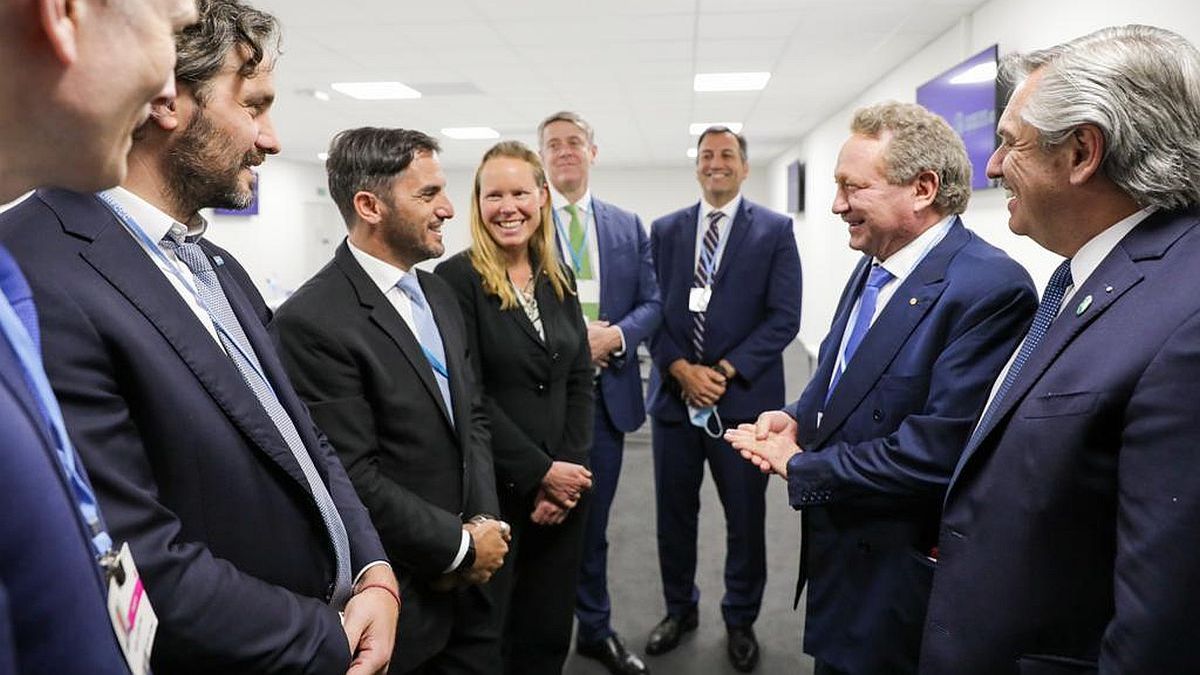Among other points, companies send an insistent question to the offices of the Ministry of Productive Development and the Central Bank: What conditions of access to the exchange market do they have to take part of the dollars they invest? Among the usual business demands, the free mobility of capital is always the order of the day. For example, the most resounding investment in recent days, that of the Australian Fortescue to build a green hydrogen plant, still has some details to be resolved in this regard.
Within this framework, to respond to these queries, the BCRA urgently prepared a report in Spanish and English, which will then be translated into other languages. The text details the current scheme for FDI, reviews the various flexibilities to the stocks that were implemented recently (for incremental investments and exports) and ratifies the promise that there will be new openings as the exchange rate tension eases. The next steps in that direction are part of the negotiation with the International Monetary Fund.
In fact, many of the multinationals interested are mining companies operating in Chile, Bolivia and Peru, who welcome landing in an Argentina governed by a program with the IMF.
Although the official philosophy is that exchange control is here to stay for a long time and the Government assures that the Fund does not completely reject this postulate, the intention expressed in the conversations is to gradually advance towards a macroprudential regulation scheme during the next years that encourage the arrival of productive capital and discourage speculative flows. Thus, while the limits on the purchase of dollars for hoarding do not have an expiration date, the perspective is to gradually free up – as the balance of payments allows – access to foreign currency for exporters and those who make productive investments. .
Along the same lines, the Government aims for Congress to deal with a set of sectorial bills after the elections, which promote a series of fiscal, tax and / or exchange benefits for companies of different activities that generate foreign exchange: hydrocarbons, agriculture , the automotive industry and electromobility, which would be added to the already approved knowledge industry law. As reported by Ámbito, the Executive also plans to promote a Plan for Argentine Mining Development, with which it projects investments of US $ 25,000 million for the next decade and which was postponed until after the elections due to the strong social rejection generated by this activity in some provinces.
Exchange conditions
“FDI and long-term external financing play a central role in the incorporation of technology and the modernization and improvement of the competitiveness of the economy, especially when it is aimed at improving export capacity. In the current context, the BCRA manages the foreign exchange market in order to make the balance of payments sustainable. Likewise, as the exchange rate stability conditions improve, the regulations will be revised “, says the Central’s report.
For now, the entity chaired by Miguel Pesce has already applied some flexibilities to the stocks so that multinationals can repatriate part of their direct investments and make profits and dividends, as part of the Regime for the Promotion of Investment for Exports and the Gas Plan. , among other measures. Companies can access the official market for this type of operation as long as they have liquidated the capital in the same way, that is, with a dollar at $ 100. This causes the foreign currency entered to impact the reserves. Companies can also enter their dollars through cash settlement (CCL) at more than $ 200 and add an offer to the financial one, but when they want to make a profit, repatriate investments or pay debts they have to do so at that higher exchange rate as well.
Investments already announced
In addition to those that he hopes will be materialized soon, the Executive celebrated the latest announcements for different productive sectors. Together they add the promise of injecting US $ 9.28 billion and will settle in different provinces. “In some cases these are plant and production extensions due to the economic and consumption reactivation, but there are also business decisions to resume projects that were postponed during the previous government,” they say in the Government.
The bulk corresponds to the investment in green hydrogen of the Australian Fortescue for US $ 8.4 billion, which was announced in Glasgow (Scotland) during the presidential tour and will be developed in Sierra Grande (Rio Negro). According to what has been promoted, it foresees the creation of more than 15,000 direct jobs and between 40,000 and 50,000 indirect ones.
Previously, two Brazilian firms had announced investments: Santana Textiles will pour US $ 30 million into its plant in Chaco and create 500 new jobs; and Marco Polo will inject US $ 10 million in 2022 to expand its bus manufacturing plant and reach 1,000 workers.
This week the French group Eramet’s announcements for US $ 400 million were added to resume the construction of a lithium plant in Salta with 2,000 jobs; from the company Changan Argentina, with Chinese capital, for US $ 20 million to produce an urban utility vehicle in a pickup version in La Rioja, which will generate 200 jobs; and from the German Puma, also in Rioja territory, which will invest US $ 420 million to reach the production of 2.5 million pairs of shoes in 2022 with two new production lines and hire 100 workers.
Source From: Ambito
David William is a talented author who has made a name for himself in the world of writing. He is a professional author who writes on a wide range of topics, from general interest to opinion news. David is currently working as a writer at 24 hours worlds where he brings his unique perspective and in-depth research to his articles, making them both informative and engaging.




